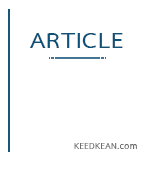Aquaculture Feed and Pharmaceutical Market: Driving Healthy Growth Beneath the Surface
-
เขียนโดย  Anuj
Anuj
วันที่ 13 เมษายน พ.ศ. 2568 เวลา 02.28 น.
1 section
0 วิจารณ์
213 อ่าน
แก้ไขเมื่อ 13 เมษายน พ.ศ. 2568 02.30 น. โดย เจ้าของเรื่องสั้น
1) Aquaculture Feed and Pharmaceutical Marke
อ่านบทความตามต้นฉบับ อ่านบทความเฉพาะข้อความSustainable Nutrition in Aquaculture Aquaculture, or the farming of aquatic organisms, has become a critical sector for meeting the rising demand for protein-rich food. As wild fish stocks face depletion, fish farming is stepping up to fill the gap. Central to this shift is the growing reliance on high-quality aquaculture feed and pharmaceuticals. These two pillars are essential not only for maximizing yield but also for ensuring the health and sustainability of aquatic life. With the intensification of fish farming practices, the need for scientifically formulated feeds and effective health solutions has skyrocketed, transforming the industry at a global level.
Rising Demand for Protein and Global Seafood Consumption As global populations grow and dietary preferences shift towards healthier protein options, the demand for seafood continues to rise. This surge has fueled investments in aquaculture systems that can efficiently produce fish and shellfish. However, to meet these expectations, fish need to be fed nutritionally complete diets that promote rapid growth and disease resistance. High-performance feeds are no longer a luxury; they are a necessity. The market is now driven by innovations in feed composition, including the use of amino acids, enzymes, prebiotics, and marine-based proteins that improve conversion rates and overall productivity.
Pharmaceuticals: The Health Backbone of Aquaculture Disease outbreaks in aquaculture systems can be catastrophic, wiping out entire harvests and causing significant economic losses. This is where aquaculture pharmaceuticals come into play. They include vaccines, antibiotics, and probiotics designed to manage and prevent diseases common in farmed species such as salmon, tilapia, and shrimp. With a focus on preventive healthcare, companies are increasingly developing eco-friendly and residue-free alternatives to traditional antibiotics, addressing both consumer safety and environmental concerns. Furthermore, innovations in drug delivery methods, like medicated feed and immersion vaccines, are reshaping how fish health is managed on commercial farms.
Innovations Driving Market Expansion The aquaculture feed and pharmaceutical market has seen continuous R&D, leading to bio-based and nutrient-dense feed alternatives. From insect protein to algae-based solutions, sustainable feed sources are gaining traction as alternatives to traditional fishmeal and fish oil. These new ingredients offer environmental benefits while reducing pressure on marine ecosystems. At the same time, the pharmaceutical segment is adopting biotechnology tools, enabling more accurate diagnostics and targeted treatment strategies for aquatic diseases. As the industry leans toward precision aquaculture, smart feeding systems and real-time health monitoring tools are also becoming part of the standard toolkit.
Global Trends and Regional Leaders Asia-Pacific continues to dominate the aquaculture landscape, with countries like China, India, Vietnam, and Indonesia at the forefront. Their vast water resources and government support for aquaculture development have created a robust demand for both feed and pharmaceutical products. Meanwhile, regions such as Europe and North America are making strides in sustainable aquaculture practices, focusing on traceability, animal welfare, and environmental compliance. The global market is highly competitive, with key players investing in mergers, acquisitions, and collaborative research to strengthen their product portfolios and regional presence.
Challenges and the Path Forward Despite its rapid growth, the industry faces hurdles such as regulatory constraints, environmental concerns, and rising feed costs. Disease management in high-density farming environments also poses ongoing challenges. However, strategic collaborations between aquafeed manufacturers, pharma companies, and regulatory bodies are paving the way for integrated solutions. The increasing adoption of digital aquaculture tools, coupled with eco-conscious farming practices, is likely to create new opportunities for sustained growth.
Conclusion As aquaculture continues to evolve into a highly scientific and technology-driven industry, the importance of quality feed and pharmaceutical products cannot be overstated. These elements are the lifeline of aquatic farming, supporting not only yield and profitability but also sustainability and global food security. With continued innovation and cross-sector collaboration, the aquaculture feed and pharmaceutical market is set to dive deeper into growth.
Tags: #Aquaculture health, #fish farming feed, #seafood nutrition, #sustainable aquaculture, #aquaculture pharmaceuticals, #aquatic disease management, #medicated fish feed, #aquaculture innovation, #aquaculture biotechnology, #marine farming solutions
Rising Demand for Protein and Global Seafood Consumption As global populations grow and dietary preferences shift towards healthier protein options, the demand for seafood continues to rise. This surge has fueled investments in aquaculture systems that can efficiently produce fish and shellfish. However, to meet these expectations, fish need to be fed nutritionally complete diets that promote rapid growth and disease resistance. High-performance feeds are no longer a luxury; they are a necessity. The market is now driven by innovations in feed composition, including the use of amino acids, enzymes, prebiotics, and marine-based proteins that improve conversion rates and overall productivity.
Pharmaceuticals: The Health Backbone of Aquaculture Disease outbreaks in aquaculture systems can be catastrophic, wiping out entire harvests and causing significant economic losses. This is where aquaculture pharmaceuticals come into play. They include vaccines, antibiotics, and probiotics designed to manage and prevent diseases common in farmed species such as salmon, tilapia, and shrimp. With a focus on preventive healthcare, companies are increasingly developing eco-friendly and residue-free alternatives to traditional antibiotics, addressing both consumer safety and environmental concerns. Furthermore, innovations in drug delivery methods, like medicated feed and immersion vaccines, are reshaping how fish health is managed on commercial farms.
Innovations Driving Market Expansion The aquaculture feed and pharmaceutical market has seen continuous R&D, leading to bio-based and nutrient-dense feed alternatives. From insect protein to algae-based solutions, sustainable feed sources are gaining traction as alternatives to traditional fishmeal and fish oil. These new ingredients offer environmental benefits while reducing pressure on marine ecosystems. At the same time, the pharmaceutical segment is adopting biotechnology tools, enabling more accurate diagnostics and targeted treatment strategies for aquatic diseases. As the industry leans toward precision aquaculture, smart feeding systems and real-time health monitoring tools are also becoming part of the standard toolkit.
Global Trends and Regional Leaders Asia-Pacific continues to dominate the aquaculture landscape, with countries like China, India, Vietnam, and Indonesia at the forefront. Their vast water resources and government support for aquaculture development have created a robust demand for both feed and pharmaceutical products. Meanwhile, regions such as Europe and North America are making strides in sustainable aquaculture practices, focusing on traceability, animal welfare, and environmental compliance. The global market is highly competitive, with key players investing in mergers, acquisitions, and collaborative research to strengthen their product portfolios and regional presence.
Challenges and the Path Forward Despite its rapid growth, the industry faces hurdles such as regulatory constraints, environmental concerns, and rising feed costs. Disease management in high-density farming environments also poses ongoing challenges. However, strategic collaborations between aquafeed manufacturers, pharma companies, and regulatory bodies are paving the way for integrated solutions. The increasing adoption of digital aquaculture tools, coupled with eco-conscious farming practices, is likely to create new opportunities for sustained growth.
Conclusion As aquaculture continues to evolve into a highly scientific and technology-driven industry, the importance of quality feed and pharmaceutical products cannot be overstated. These elements are the lifeline of aquatic farming, supporting not only yield and profitability but also sustainability and global food security. With continued innovation and cross-sector collaboration, the aquaculture feed and pharmaceutical market is set to dive deeper into growth.
Tags: #Aquaculture health, #fish farming feed, #seafood nutrition, #sustainable aquaculture, #aquaculture pharmaceuticals, #aquatic disease management, #medicated fish feed, #aquaculture innovation, #aquaculture biotechnology, #marine farming solutions
คำยืนยันของเจ้าของเรื่องสั้น
✓ เรื่องนี้ฉันแต่งขึ้นเอง
คำวิจารณ์
* ต้องล็อกอินก่อนครับ ถึงสามารถเขียนวิจารณ์ได้

รอสักครู่กำลังโหลดข้อมูล
โหวต
เนื้อเรื่องมีความน่าสนใจ
0 /10
ความถูกต้องในการใช้ภาษา
0 /10
ภาษาที่ใช้น่าอ่าน
0 /10
* ต้องล็อกอินก่อนครับ ถึงสามารถโหวดได้
แบบสำรวจ



